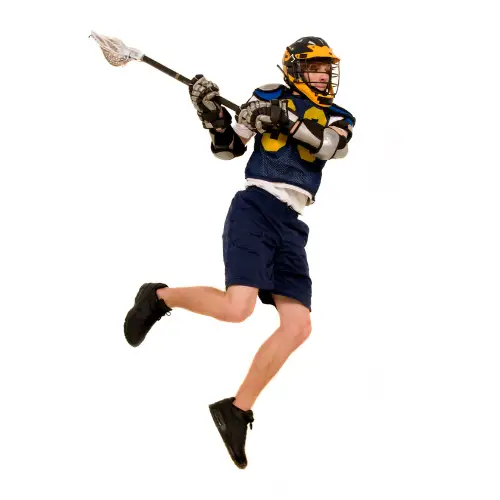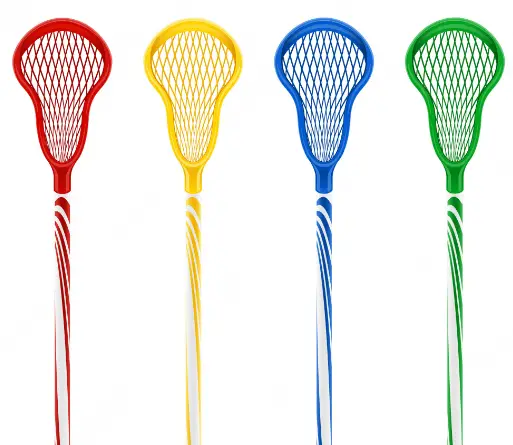Lacrosse is an intense and physical sport, and it’s important to protect yourself while playing. One of the most essential pieces of protective gear for a lacrosse player is the mouthguard. Not only does a mouthguard protect the player’s teeth and gums, but it can also help prevent concussions. While wearing a mouthguard is important, it’s also crucial to make sure it is properly attached to your lacrosse helmet.
In this article, we’ll be discussing the steps to properly attach a mouthguard to your lacrosse helmet, ensuring that it stays in place while you play and provides maximum protection.
Different Types Of Mouthguard Attachments
- Strapless Mouthguard: This type of mouthguard is designed to fit snugly inside the mouth without the need for straps or any other attachments to the helmet.
- Strap-On Mouthguard: This type of mouthguard features a strap that wraps around the helmet, securing the mouthguard in place and preventing it from shifting during play.
- Snap-In Mouthguard: This type of mouthguard features a snap or clip that attaches directly to the helmet, holding the mouthguard in place and ensuring a secure fit.
- Chin Strap Mouthguard: This type of mouthguard features a chin strap that secures the mouthguard in place, preventing it from slipping or shifting during play.
- Combination Mouthguard: This type of mouthguard features a combination of straps and snaps that attach to the helmet, ensuring a secure fit and protecting the mouth and teeth from injury.
Steps In Attaching Mouthguard To Lacrosse Helmet
- Choose the right size mouthguard: Before attaching the mouthguard, make sure it fits properly and is the right size for your mouth. A mouthguard that is too small or too big will not provide adequate protection.
- Clean the helmet: Clean the helmet where the mouthguard will be attached to make sure there is no dirt or debris that can affect the adhesion of the mouthguard.
- Place the mouthguard in hot water: To make the mouthguard pliable and easy to attach, place it in hot water for a few minutes. This will also help it to form to the shape of your mouth.
- Attach the mouthguard to the helmet: Take the mouthguard out of the hot water and carefully attach it to the front of the helmet. Make sure it is centered and secure.
- Secure the mouthguard: Once the mouthguard is in place, use straps or ties to secure it to the helmet. This will prevent it from moving or falling off during play.
- Check the fit: Test the fit of the mouthguard and make sure it feels comfortable and secure. If it is too loose, adjust the straps or ties accordingly.
- Test the mouthguard: Before playing, test the mouthguard by speaking and breathing. If it is too tight or interferes with your breathing, adjust the straps or ties accordingly.
- Store the mouthguard: When not in use, store the mouthguard in a safe place where it won’t get lost or damaged.
How to Check If a Mouthguard Attached On Lacrosse Helmet Fits Correctly
Open your mouth: The mouthguard should be attached to your helmet in a way that allows you to open your mouth comfortably. If you can’t open your mouth, the mouthguard is too tight.
Breathe normally: The mouthguard should not impede your ability to breathe. If you have trouble breathing, the mouthguard is too tight or not positioned correctly.
Check the fit: The mouthguard should fit snugly and comfortably in your mouth. If it’s too loose or falls out when you talk, it needs to be adjusted.
Check the coverage: The mouthguard should cover your upper and lower teeth, as well as your gums. It should also extend far enough back to protect the molars.
Check for biting marks: The mouthguard should not cause any marks or indentations on your gums or teeth. If it does, it is too tight and needs to be adjusted.
Check the retention: The mouthguard should not move around or come off during play. If it does, it may need to be adjusted or replaced.
Consult a professional: If you have trouble with the fit of your mouthguard, it’s best to consult a dental professional for assistance. They can help you find the right size and type of mouthguard for your specific needs.
Conclusion
In conclusion, attaching a mouthguard to a lacrosse helmet is a simple and straightforward process. All you need is a mouthguard and a helmet with a cage or a mask, and you can follow the steps mentioned above to secure it in place. Ensure that the mouthguard fits snugly and does not interfere with your breathing or vision. Remember to replace the mouthguard if it becomes damaged, and always wear it during practices and games to protect your teeth and mouth.







